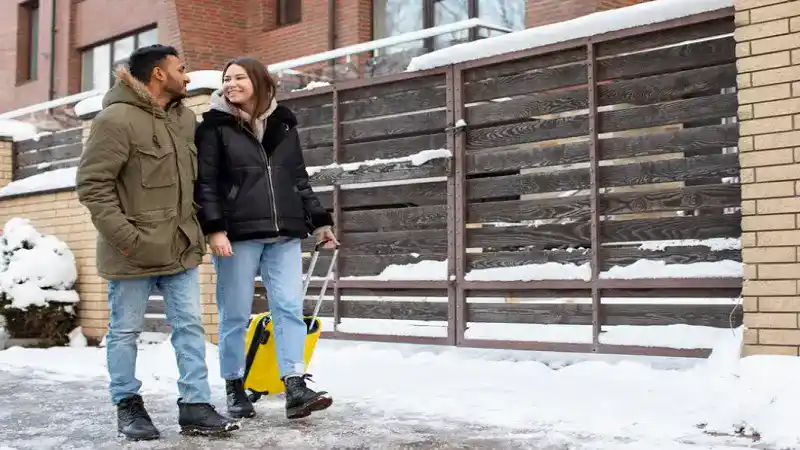As the winter months approach, homeowners in Texas must prepare for a range of potential challenges that can arise from the unique climate of the region. While Texas is known for its relatively mild winters, it is not immune to water damage risks that can threaten the integrity of our homes. This article delves into the various risks of water damage during the winter months in Texas and offers comprehensive strategies for homeowners to protect their properties.
Understanding Water Damage Risks in Winter
Types of Water Damage
Water damage can occur in various forms, each with its own set of causes and implications. Understanding these types is crucial for effective prevention:
- Flooding: Often resulting from heavy rainfall, melting snow, or frozen pipes, flooding can cause significant structural damage and health hazards.
- Frozen Pipes: Texas winters can bring unexpected cold snaps. When temperatures drop, the water inside pipes can freeze, expand, and ultimately burst, leading to extensive water damage.
- Ice Dams: These form when snow on the roof melts and refreezes at the eaves, creating a barrier that prevents water from draining off the roof. This trapped water can seep into the home, damaging ceilings, walls, and insulation.
- Condensation: As temperatures fluctuate, condensation can form on windows, walls, and even in attics. This moisture can lead to mold growth and structural deterioration.
Why Texas Homes are Vulnerable
Texas homes are often designed for heat, not cold. Many homes lack proper insulation, particularly in attics and crawl spaces. This can lead to higher risks of frozen pipes and condensation during cold weather. Additionally, the expansive soil found in many parts of Texas can shift during winter rains, leading to foundation issues that exacerbate water damage risks.
Key Prevention Strategies
1. Insulate Pipes and Attics
One of the most effective ways to prevent water damage is to ensure that pipes are well-insulated. Here’s how to do it:
- Pipe Insulation: Use foam pipe insulation to cover vulnerable pipes in unheated areas, such as basements and attics. This will help maintain a consistent temperature in the pipes, reducing the likelihood of freezing.
- Attic Insulation: Adequate insulation in your attic can prevent heat loss, which is vital for keeping pipes warm. Ensure that your attic is insulated according to current building codes.
2. Maintain Your Gutters and Downspouts
Keeping your gutters and downspouts clear is essential for proper water drainage. During winter, falling leaves can clog gutters, leading to ice dam formation. Regular maintenance includes:
- Sewage Cleaning: Remove leaves, twigs, and debris from gutters to ensure that water flows freely and prevent any sewage backflow issues.
- Downspout Extensions: Ensure that downspouts direct water at least six feet away from the foundation to prevent pooling and potential flooding.
3. Check Your Roof for Vulnerabilities
Your roof is your home’s first line of defense against the elements. Regular inspections can help identify potential issues before they lead to water damage:
- Inspect Shingles: Look for cracked, missing, or curling shingles that could allow water to penetrate.
- Seal Roof Valleys and Flashing: Ensure that valleys and flashing around chimneys and vents are watertight to prevent leaks.
4. Monitor Indoor Humidity Levels
Indoor humidity can significantly affect your home’s susceptibility to water damage. High humidity can lead to condensation and mold growth.
- Use a Hygrometer: Monitor humidity levels, aiming for a range of 30-50%.
- Dehumidifiers: Utilize dehumidifiers in areas prone to dampness, such as basements, to maintain optimal humidity levels.
5. Prepare for Freezing Temperatures
Taking proactive measures before a cold snap can prevent the inconvenience and cost of water damage:
- Let Faucets Drip: Allowing faucets to drip during extreme cold can relieve pressure in the pipes and prevent freezing.
- Open Cabinet Doors: Opening cabinet doors under sinks can help warm air circulate around pipes.
What to Do if Water Damage Occurs
Despite best efforts, some homeowners may still experience water damage during winter. Prompt action is essential to mitigate damage:
1. Identify the Source of Water
Quickly determine where the water is coming from. Whether it’s a burst pipe, leak from the roof, or condensation, understanding the source is vital for effective remediation.
2. Remove Water Immediately
Use wet/dry vacuums or mops to remove standing water. The quicker this is done, the less chance of long-term damage.
3. Dry Out the Affected Areas
Use fans, dehumidifiers, and open windows to promote airflow and drying.
4. Assess for Mold Growth
After drying, inspect for signs of mold. If mold is present, it may be necessary to call in professionals for safe removal.
5. Contact Water Damage, Restoration Professionals
For significant damage, hiring professionals experienced in water damage restoration can save time and prevent further issues.
Conclusion
Winter presents unique challenges for Texas homeowners, particularly concerning water damage risks. By understanding these risks and implementing proactive measures, homeowners can safeguard their properties against the adverse effects of winter weather. Prevention, regular maintenance, and prompt action in the face of water damage are key strategies for protecting your home.

